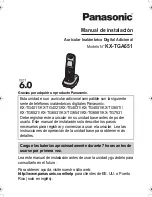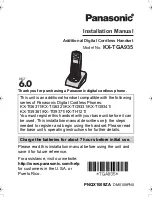
385
Continued on next page
Charac
ter Entry
●
Converting entered hiragana
When a word you want to enter does not appear as a
predicted candidate or when the word prediction is
set to OFF, change the entered hiragana to the word
you want to enter.
<Example: To enter “
秋のキャンプ
” (Autumn camp)>
1
Enter hiragana
■
If you press the wrong key
X
Press
t
to delete the character
■
If you press a key too many times
X
r
The previous character assigned to that key
appears.
■
To confirm the hiragana
X
d
(Set)
2
Edit entered text
X
Press
u
(CHG) to
change text to kanji or
katakana
The conversion candidate
for the first phrase is
highlighted and the kanji
candidates for the remaining
unconfirmed text are
underlined ( _ ).
■
If the conversion candidate is your
preferred kanji or katakana
X
d
(Set)
The conversion candidate is confirmed and the
next phrase is highlighted.
■
If the conversion candidate is not your
preferred kanji or katakana
X
Press
u
(CHG) to display
other conversion candidates
X
Select the characters to convert
A list of conversion candidates
for the highlighted phrase
appears. Hiragana and
katakana are included in the conversion
candidates.
If the readings in the conversion range consist
entirely of “
あ
”-level characters, numbers are
also included in the conversion candidates. For
example, entering
123
(
あかさ
) also
shows the conversion candidate “123”.
■
To change the conversion range
X
Use
v
to change the conversion range
The conversion candidates change as the
conversion range changes.
■
To display the alphanumeric/katakana
conversion candidates
X
p
(ABC123)
The alphanumeric and katakana conversion
candidates of the entered key appear. For
example, pressing
23
(
かさ
)
p
(ABC123) shows the conversion candidates
such as “AD”, “23” or “
カサ
”.
If you enter a 2- to 4-digit number and the number
can be displayed as date or time, the conversion
candidates of date or time also appear.
• 10/19
• 10
月
19
日
• 10:19
• 10
時
19
分
• 1019
年
●
Number of characters and scrolling
■
Numbers of characters remaining and already
entered
Characters displayed in the text entry (edit) screen
are counted according to the following rules:
• A single-byte character is counted as 1 byte and a
double-byte character is counted as 2 bytes.
1
once
2
twice
5
5 times
0
3 times
あ
き
2
twice
き
の
ん
6
3 times
w
twice
ふ
゜
(Han-dakuten)
8
once
や
w
once
To lower case
N
z
If the conversion candidate list includes symbols,
pictograms or face marks, you can convert the text
to these symbols.
Refer to the following lists for the readings of
symbols, pictograms and face marks.
• “Symbol Reading List”
→
p.441
• “Pictogram Reading List”
→
p.442
• “Face Mark Reading List”
→
p.445
z
If date and time related reading (“
ことし
” (this
year), “
きょう
” (today), “
いま
” (now), etc.) is
entered, conversion candidates corresponding to
the current date and time also appear.
z
For other text entry operations such as entering
symbols, pictograms, or inserting a space or line-
feed, refer to “Useful keys to assist text entry”
(p.386) and the function menu of the text entry
(edit) screen (p.387).
z
You can use kuten codes to enter kanji that cannot
be converted.
→
p.390
Summary of Contents for N-09A
Page 22: ......
Page 180: ......
Page 206: ......
Page 216: ......
Page 238: ......
Page 266: ......
Page 424: ......
Page 445: ...443 Continued on next page Appendix Troubleshooting Reading Reading Reading...
Page 487: ...485 Appendix Troubleshooting Memo...
Page 488: ...486 Appendix Troubleshooting Memo...
Page 489: ...487 Appendix Troubleshooting Memo...
Page 490: ...488 Appendix Troubleshooting Memo...
Page 491: ...489 Index Quick Manual Index 490 Quick Manual 504...
Page 568: ...Kuten Code List...
















































